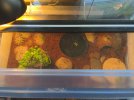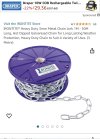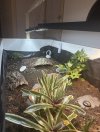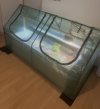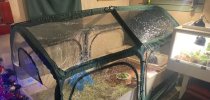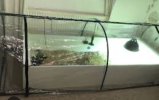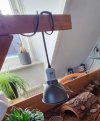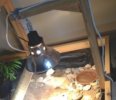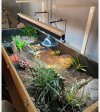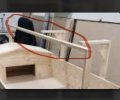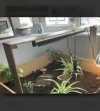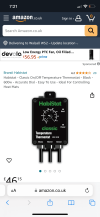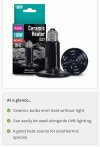RayneNoire
New Member
Hi all, new member here. I recently got a herman tortoise at an expo. About 3 days ago. He's super active and i love him so much already
I've been reading the posts for about a week. Now I have all the basics. My temp gun will be here on Thursday but other wise I have the basics that were recommended on the care guides on this forum. I have a few questions on the enclosure that I'm having trouble finding the info on tho and any help would be appreciated
I saw for babies people are using a small tub and covering in foil to keep in the humidity and temps. How long should the baby be in there.
I have mine in a 10 gallon right now. I can accommodate up to a 4*2*2 currently and in a month when I move I can give him a whole room if needed. Not sure when he needs to be sized up and what's a good size for him currently . His shell is about 1 inch floor to top of shell when he's flat and just shell length going but to head is just under 2 inches. He looked smaller at the expo and I thought he was a hatchling but I feel like he needs more than this 10 gallon. Not sure if I should move him to a 20 gallon or a table. But I don't think he's ready for an open table pretty sure he still needs the high humidity. Any ideas or advice on it would be super helpful
I've been reading the posts for about a week. Now I have all the basics. My temp gun will be here on Thursday but other wise I have the basics that were recommended on the care guides on this forum. I have a few questions on the enclosure that I'm having trouble finding the info on tho and any help would be appreciated
I saw for babies people are using a small tub and covering in foil to keep in the humidity and temps. How long should the baby be in there.
I have mine in a 10 gallon right now. I can accommodate up to a 4*2*2 currently and in a month when I move I can give him a whole room if needed. Not sure when he needs to be sized up and what's a good size for him currently . His shell is about 1 inch floor to top of shell when he's flat and just shell length going but to head is just under 2 inches. He looked smaller at the expo and I thought he was a hatchling but I feel like he needs more than this 10 gallon. Not sure if I should move him to a 20 gallon or a table. But I don't think he's ready for an open table pretty sure he still needs the high humidity. Any ideas or advice on it would be super helpful
